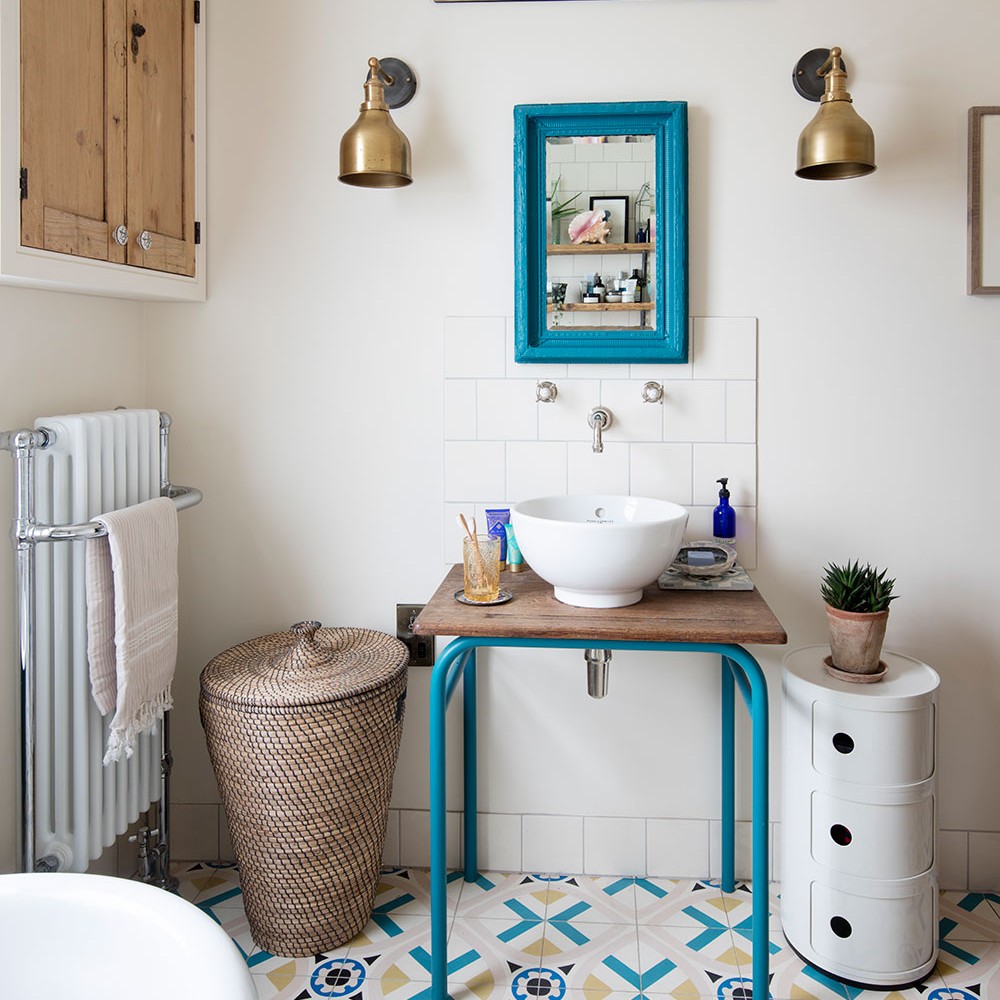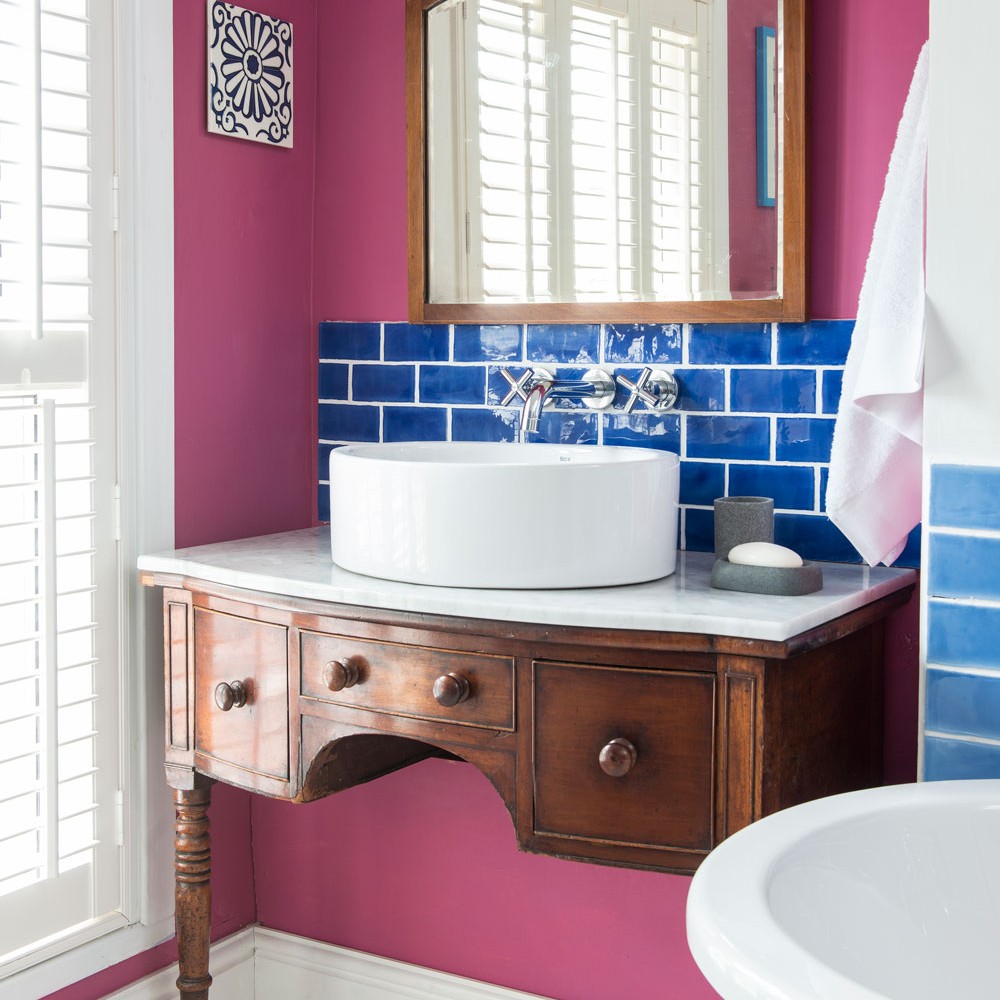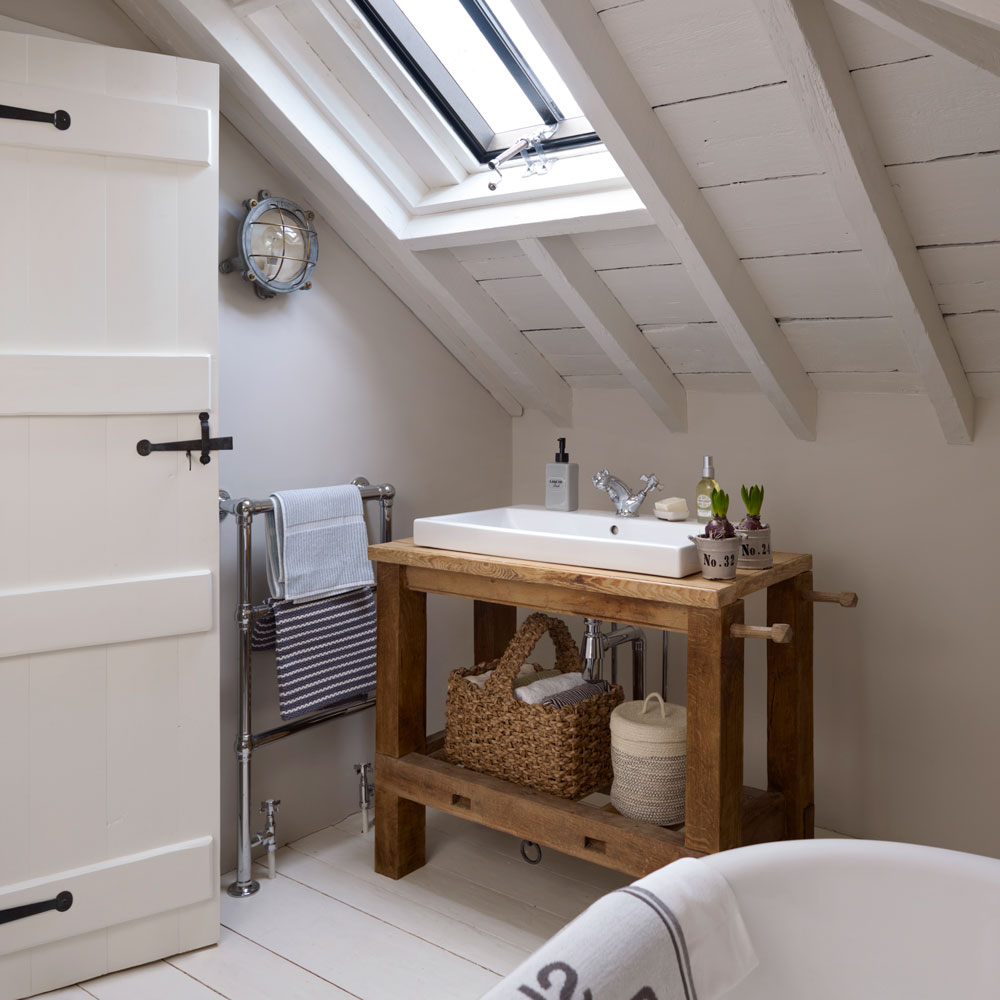How to upcycle a vanity unit – to create a super-stylish piece of furniture
Give an old piece of furniture a new lease of life and fresh purpose with a clever revamp
Swapping a pedestal basin for a vanity unit will give you handy extra countertop space and, if you go for one with storage underneath, you’ll have somewhere to stash your toiletries and cleaning kit, too. But if you can’t find an off-the-peg design that suits your style, why not consider repurposing a piece of furniture you already own?

Want more ingenious craft ideas? READ: Six reasons why you should start upcycling
1. Can I use any piece of furniture to make a vanity unit?
The first rule of thumb is to choose something solid and sturdy to support the weight of the basin – remember that it’ll be much heavier once it’s filled with water. Consoles, dressing tables and desks all make great bases – or consider a sideboard (especially useful if you fancy a double basin vanity), cupboard or chest of drawers if you could use the extra storage. Just make sure the dimensions suit the size of your bathroom and that you’ll have adequate countertop space.

2. Which style of washbasin should I go for?
The easiest option if you’re adapting your own piece of furniture is to go for a countertop basin or bowl, which simply sits on top of the vanity unit. There are a variety of shapes and lots of different styles to choose from, from plain white to highly decorated Moroccan/global-inspired designs. You’ll just need to make cut-outs in the countertop to allow for the waste pipe and taps.
3. Do I need special taps?
Countertop basins are best paired with either wall-mounted taps (positioned on the wall just above the basin) or tall basin taps (to allow for the height of the basin) positioned centrally or to the side, although some designs do incorporate tap holes or
taps in the basin itself.

4. What about the plumbing work?
If you’re using a table for your vanity base and the pipework is going to be exposed, it’s worth going for a more decorative option like chrome, brass or copper, or even black or coloured pipework, rather than standard white plastic piping. This won’t matter if the pipework is going to be hidden away inside a cupboard, but bear in mind that you will have to sacrifice some of your storage space to allow for the plumbing work. Also, if your unit has drawers, you might have to rework the drawer sizes
to accommodate the pipework.
5. What height should the ideal vanity unit be?
As a general rule, the top of the basin should be around 75-100cm from the floor, so you may need to make some height adjustments if you’re adapting your own piece – or maybe consider mounting it on the wall instead.
Sign up to our newsletter for style inspiration, real homes, project and garden advice and shopping know-how

6. How should I protect the counter?
Water will damage wooden surfaces, however careful you are, so apply several coats of marine-grade varnish to give wood an extra protective seal. Reapply every few months to ensure ongoing protection. Alternatively, consider tiling the surface or replacing the countertop altogether with a slab of marble.
Need more bathroom inspiration? READ: Small bathroom ideas to optimise your tiny space
What are you waiting for? Get upcycling now!
Tamara was Ideal Home's Digital Editor before joining the Woman & Home team in 2022. She has spent the last 15 years working with the style teams at Country Homes & Interiors and Ideal Home, both now at Future PLC. It’s with these award wining interiors teams that she's honed her skills and passion for shopping, styling and writing. Tamara is always ahead of the curve when it comes to interiors trends – and is great at seeking out designer dupes on the high street.